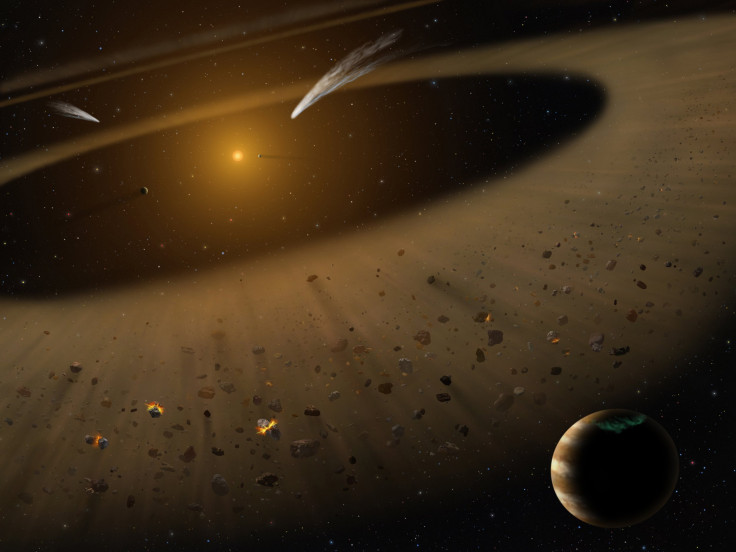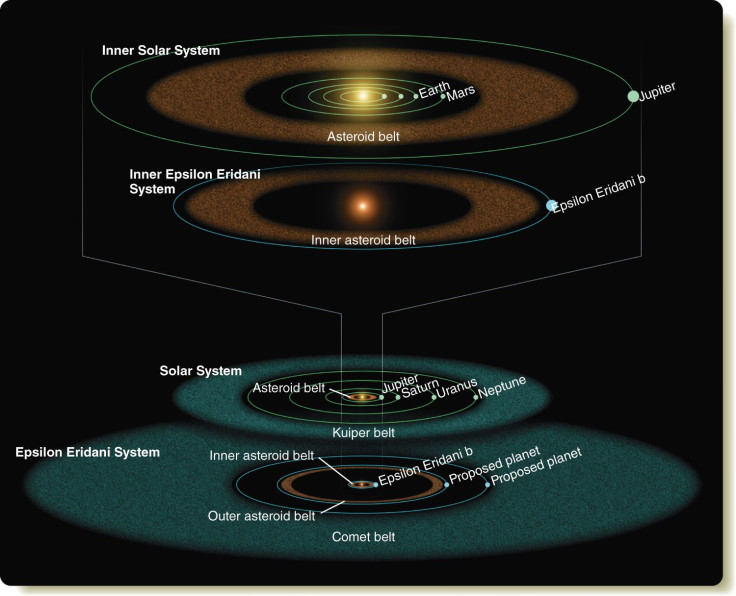A Planetary System Just 10.5 Light-Years From Earth Could Shed Light On Solar System's Formation And Evolution

Roughly 10.5 light-years from Earth lies a young planetary system in its early years of formation that scientists have now discovered is remarkably like our own. This system, which contains the star Epsilon Eridani (eps Eri) at its centre, is just 800 million years old, and could help scientists understand how our solar system formed and evolved.
“Previous studies indicate that eps Eri has a debris disk, which is the name astronomers give to leftover material still orbiting a star after planetary construction has completed,” NASA said in a statement released Tuesday. “Careful measurements of the motion of eps Eri indicates that a planet with nearly the same mass as Jupiter circles the star at a distance comparable to Jupiter’s distance from the Sun.”
Read: NASA Spies Distant Protostars
The measurements are based on images captured by NASA’s Stratospheric Observatory for Infrared Astronomy (SOFIA) — a joint project of NASA and the German Aerospace Center. The observatory’s 2.5 meter telescope allowed scientists to view features that were three times smaller than what could be seen with the Spitzer Space Telescope.
“The high spatial resolution of SOFIA combined with the unique wavelength coverage and impressive dynamic range of the FORCAST camera allowed us to resolve the warm emission around eps Eri, confirming the model that located the warm material near the Jovian planet’s orbit,” Kate Su from the University of Arizona who led the research team that made the observations, said in a statement. “Furthermore, a planetary mass object is needed to stop the sheet of dust from the outer zone, similar to Neptune’s role in our solar system. It really is impressive how eps Eri, a much younger version of our solar system, is put together like ours.”
The observations confirm the presence of a complex debris disk around the star. Su and her team were also able to determine that the warm material around eps Eri is most likely arranged in at least one narrow belt rather than in a broad continuous disk.

“These leftover planetesimals can be distributed in one broad region or two narrow belt-like regions, with the inner one similar to our own asteroid belt and outer one at about 10 to 15 astronomical units, which in our solar system falls into the region between Saturn and Uranus,” Su explained in a separate statement. “SOFIA's resolution is not high enough to differentiate the two distributions.”
The researchers hope that further observations using the James Webb Telescope — to be launched in 2018 — could reveal further details of the young star system.
Over the years, astronomers have discovered and confirmed the existence of nearly 3,500 exoplanets, but there is one question that they still haven’t been able to answer satisfactorily — how exactly do planets form? Specifically, how do dust particles just a few micrometers in size aggregate to form gigantic planets thousands of miles in diameter?
The new observations could shed light on this scarcely understood stage of planet formation, especially on the process of grain growth.
© Copyright IBTimes 2024. All rights reserved.












